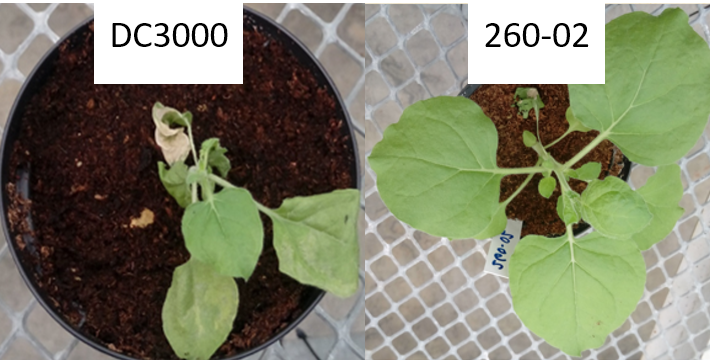NEW INSIGHTS ON PSEUDOMONAS SYRINGAE: NOT JUST A PATHOGEN?
Plants develop in a microbe-rich environment and must interact with a plethora of microorganisms, both pathogenic and beneficial. The genus Pseudomonas has received particular attention because of its strains that can show beneficial or pathogenic effects on plants, such as the model organisms P. fluorescens and P. syringae. In this study, carried out by an international group of researchers, including Paola Casati and Alessandro Passera, respectively a professor and post-doctoral fellow in plant pathology at DiSAA, a plant beneficial P. syringae strain (strain 260-02) was identified, described, and compared to plant pathogenic strains of the same species, in particular with strain DC3000 (Figure), at phenotypic and genotypic level. The study characterizes strain 260-02 as an interesting organism to employ in understanding the differences between pathogenic and beneficial strains, and opens new, interesting perspectives for future studies in the field of plant-microbe interactions.

REFERENCE
Not just a pathogen? Description of a plant beneficial Pseudomonas syringae strain. Frontiers in Microbiology 10.1409. A. Passera, S. Compant, P. Casati, M.G. Maturo, G. Battelli, F. Quaglino, L. Antonielli, D. Salerno, M. Brasca, S.L. Toffolatti, F. Mantegazza, M. Delledonne, B. Mitter.
DOI: 201910.3389/fmicb.2019.01409.

